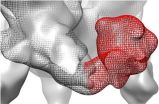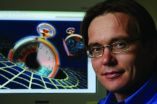Fruit flies learn from others
Researchers study how group interaction influences where female fruit flies lay their eggs
2014-11-17
(Press-News.org) Fruit flies do not always conform to the norm. When female fruit flies have to decide where to lay their eggs, they take their lead from what they see most others in their group do. However, some do take their personal preferences into account. So says Marine Battesti of the Université Paris-Sud in France, lead author of a study in Springer's journal Behavioral Ecology and Sociobiology.
The site on which an insect chooses to lay her eggs is very important for the development and survival of future generations. Such choices are not fixed, but are influenced by the environment, genetics and the social context. Previous work by Battesti showed how inexperienced or naïve Drosophila melanogaster females use social cues to choose where to lay their eggs, and that such socially acquired preferences can be transmitted within groups.
To follow up on this, Battesti and her colleagues watched what happened when groups of naïve "observer" flies were given two possible sites on which to lay their eggs: either a banana-flavored location, or a one that was strawberry-flavored. The observers were first mixed together with "demonstrator" flies that were already trained to prefer one of the two media, and then allowed to choose. The observers also had the chance to experience the two flavors for themselves.
The researchers found that fruit flies largely - but not completely - conform in their choice of sites on which to lay their eggs to cues from their social group. Observers acquired a preference for banana when at least 25 percent of the demonstrators were trained on banana, while they acquired a preference for strawberry only when all demonstrators were trained for this preference. This shows that even the presence of a small proportion of individuals trained to lay eggs on banana is enough to induce a biased preference for this tropical fruit. The preferences of observer flies are therefore highly sensitive to the social composition of the demonstrator group.
Importantly, not all fruit fly females conformed to this norm. Whereas observer flies were strongly influenced by their social environment, demonstrators were not. Each individual fly behaved according to personal information and ignored the social environment. This happened even when most of the other demonstrators in the group were biased towards one of the flavor mediums.
According to study, the results suggest that fruit fly females combine their personal preference with social information to choose sites for their eggs, rather than showing complete social conformity. Battesti noted, "Individual decision-making is the result of complex interactions between different social and personal information sources in response to environment variation."
INFORMATION:
Reference:
Battesti, M. et al (2014). Biased social transmission in Drosophila oviposition choice, Behavioral Ecology and Sociobiology DOI 10.1007/s00265-014-1820-x.
ELSE PRESS RELEASES FROM THIS DATE:
2014-11-17
UC Davis researchers are getting a new look at the workings of HIV and other viruses thanks to new techniques in electron microscopy developed on campus.
The envelope (or Env) protein of HIV is a key target for vaccine makers: it is a key component in RV144, an experimental vaccine that is so far the only candidate to show promise in clinical trials. Also called gp120, the Env protein associates with another protein called gp41 and three gp120/gp41 units associate to form the final trimeric structure. The gp120 trimer is the machine that allows HIV to enter and attack ...
2014-11-17
WASHINGTON, Nov. 17, 2014 -- They are seemingly the most popular thing on the Internet, the subject of millions of videos and hundreds of memes: cats. This week Reactions answers some of the biggest kitty questions out there: Why does catnip make most cats go crazy? What does it mean when your cat rubs against your leg? How does kitty litter clump? Check out the nearly purr-fect video here: http://youtu.be/6_C9i-2QGeU.
Subscribe to the series at Reactions YouTube, and follow us on Twitter @ACSreactions to be the first to see our latest videos.
INFORMATION:
The American ...
2014-11-17
ABBOTT PARK, Ill., Nov. 17, 2014 - People aged 65 and older, who were being treated for chronic obstructive pulmonary disease (COPD) in the hospital and received nutrition treatment (oral nutrition supplements) had reduced lengths of stay, hospital costs and chances of returning to the hospital within 30-days, according to a study published in CHEST.
Chronic obstructive pulmonary disease (COPD) -- which includes conditions like chronic bronchitis and emphysema -- is a lung disease that compromises breathing. As COPD often occurs among seniors, it is one of the leading ...
2014-11-17
Alexandria, Va. -- Hurricane Sandy struck the U.S. East Coast in October 2012, leaving about $65 billion of damage in its wake and raising the question of how to mitigate the damage from future storms. It's a question that arises in the wake of most natural disasters: What steps can society take to protect itself from storms, floods, landslides, earthquakes, tsunamis or volcanic eruptions? But the question itself illustrates the complexity of preparing for natural disasters.
Our first instincts might be to protect ourselves as well as possible, but reality sets in quickly: ...
2014-11-17
CORVALLIS, Ore. - Engineers at Oregon State University have identified a method to rapidly prepare frozen red blood cells for transfusions, which may offer an important new way to manage the world's blood supply.
It's already possible to cryopreserve human red blood cells in the presence of 40 percent glycerol, but is rarely done because of the time-consuming process to thaw and remove the glycerol from the blood. This can take an hour or more and makes it logistically difficult to use frozen blood.
However, some initial experiments and computer modeling of a proposed ...
2014-11-17
RENO, Nev. - The everyday use of a GPS device might be to find your way around town or even navigate a hiking trail, but for two physicists, the Global Positioning System might be a tool in directly detecting and measuring dark matter, so far an elusive but ubiquitous form of matter responsible for the formation of galaxies.
Andrei Derevianko, of the University of Nevada, Reno, and his colleague Maxim Pospelov, of the University of Victoria and the Perimeter Institute for Theoretical Physics in Canada, have proposed a method for a dark-matter search with GPS satellites ...
2014-11-17
LIVERMORE, Calif. - Lawrence Livermore National Laboratory researchers have developed an efficient method to measure residual stress in metal parts produced by powder-bed fusion additive manufacturing.
This 3D printing process produces metal parts layer by layer using a high-energy laser beam to fuse metal powder particles. When each layer is complete, the build platform moves downward by the thickness of one layer, and a new powder layer is spread on the previous layer.
While this process is able to produce quality parts and components, residual stress is a major ...
2014-11-17
The race to make computer components smaller and faster and use less power is pushing the limits of the properties of electrons in a material. Photonic systems could eventually replace electronic ones, but the fundamentals of computation, mixing two inputs into a single output, currently require too much space and power when done with light.
Researchers at the University of Pennsylvania have engineered a nanowire system that could pave the way for this ability, combining two light waves to produce a third with a different frequency and using an optical cavity to amplify ...
2014-11-17
Rice University scientists have invented a novel cathode that may make cheap, flexible dye-sensitized solar cells practical.
The Rice lab of materials scientist Jun Lou created the new cathode, one of the two electrodes in batteries, from nanotubes that are seamlessly bonded to graphene and replaces the expensive and brittle platinum-based materials often used in earlier versions.
The discovery was reported online in the Royal Society of Chemistry's Journal of Materials Chemistry A.
Dye-sensitized solar cells have been in development since 1988 and have been the subject ...
2014-11-17
Scientists using a microbe that occurs naturally in eastern cottonwood trees have boosted the ability of two other plants - willow and lawn grass - to withstand the withering effects of the nasty industrial pollutant phenanthrene and take up 25 to 40 percent more of the pollutant than untreated plants.
The approach could avoid the regulatory hurdles imposed on transgenic plants - plants with genes inserted from or exchanged with other plant or animal species - that have shown promise in phytoremediation, the process of using plants to remove toxins from contaminated sites, ...
LAST 30 PRESS RELEASES:
[Press-News.org] Fruit flies learn from others
Researchers study how group interaction influences where female fruit flies lay their eggs





